7 Trapezius Stretches for Tension Release
Author:
Reviewed by:
(21 years of Oly Lifting experience)
Unlock your full potential by engaging with our experts and community! Have questions about your fitness journey or looking for expert advice on weightlifting techniques? Don’t hesitate — leave a comment below and Zinaida Bondarenko will provide a personalized answer and insights to help you reach your goals.
Torokhtiy is reader-supported. Some links are affiliate links, and we may earn a commission at no extra cost to you. See our disclosure page for details.
Do you suffer from joint and muscle pain in the trapezius area? Are you looking for a natural way to relieve tension and improve your well-being? If yes, you’ve come to the right place!
Trapezius stretches are simple to perform at home and do not require any extra equipment. These range from the fundamentals of trapezius stretching to advanced techniques for increasing flexibility and range of motion.
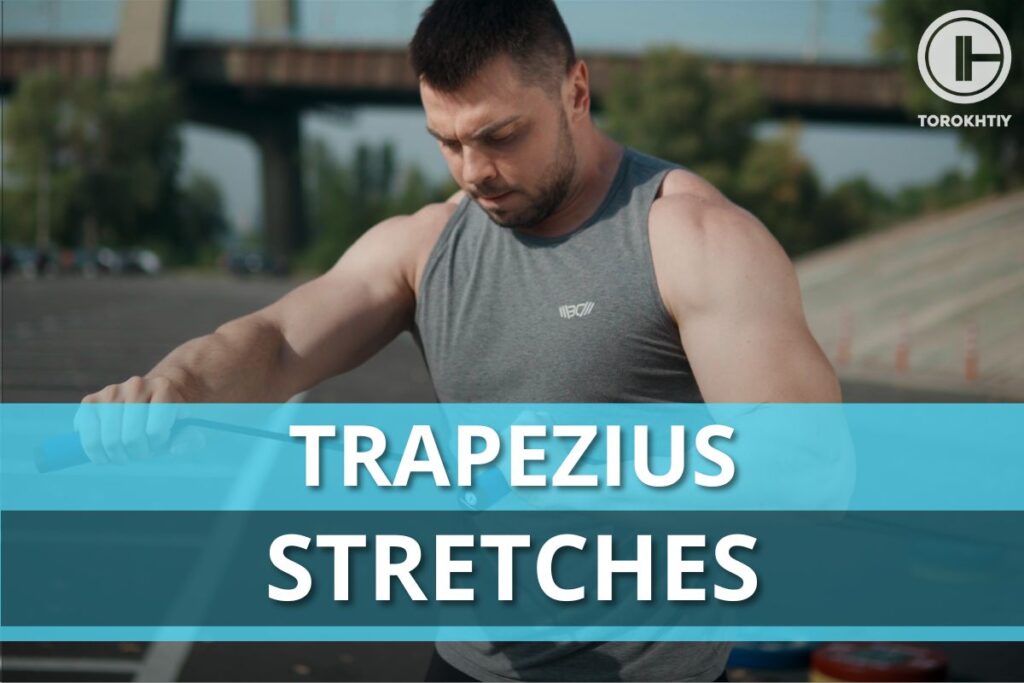
In this article, we’ll guide you through effective trapezius stretches to help you find relief and relaxation. Let’s begin!
What Muscles Do You Stretch In Trapezius?
These stretches are designed to stretch the trapezius muscle, which is located in the upper back and neck. This muscle is vital for supporting your neck and shoulders, and it can cause pain, stiffness, and a restricted range of motion if it becomes tight or overworked.
Stretching consistently, on the other hand, can help you ease these symptoms and enhance your general well-being.
There are several different types of stretches that you can perform to target different parts of the trapezius muscle.
For example, an upper trap stretch targets the upper portion of the trapezius muscle, while a lower trap stretch targets the lower portion of the muscle. A mid trap stretch, on the other hand, targets the middle area.
What Causes Tight Trapezius?
Tight trapezius muscles can be caused by various factors. These include poor posture, repetitive motions, and stress. When you spend long hours sitting at a desk.
For example, your shoulders may become rounded, and your head may jut forward. It will put extra strain on your upper back and neck muscles, including your trapezius muscle.
Repetitive motions such as typing or carrying heavy objects can also cause the trapezius muscle to become overworked and tight.
Additionally, stress can cause the trapezius muscle to become tight and painful. When you’re stressed, you may hold tension in your shoulders and neck, causing the trapezius muscle to contract and become stiff.
Fortunately, performing regular trap stretches can help alleviate these symptoms and reduce tension in your trapezius muscle.
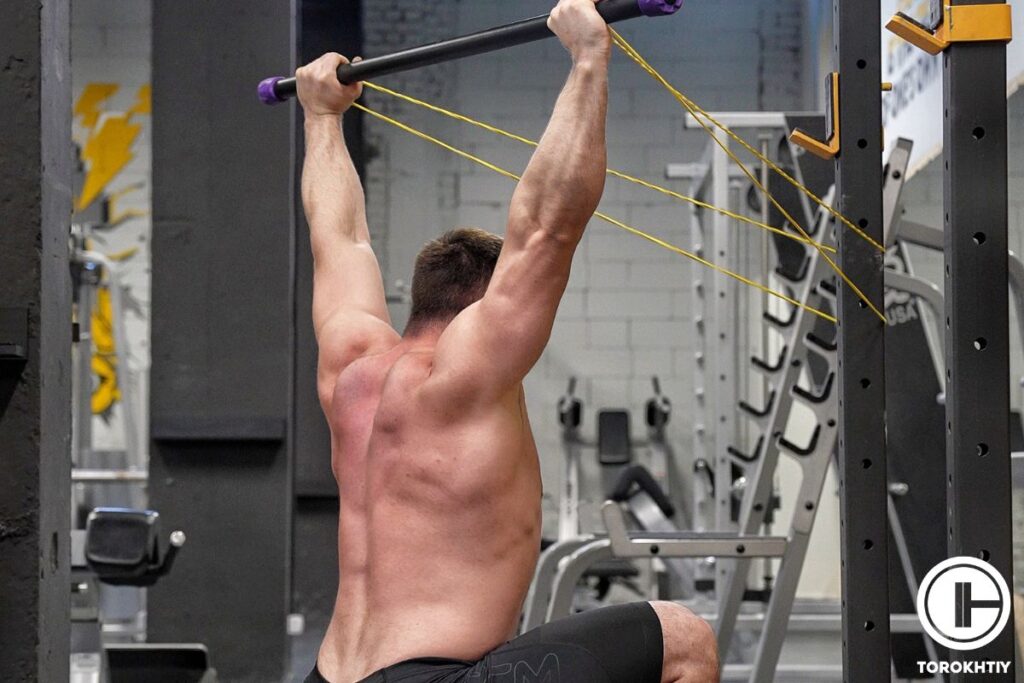
5 Reasons To Perform Trapezius Stretching Exercises?
Here are some benefits of stretching your traps:
Reduce Pain And Stiffness
When your trapezius muscles are tight, they can cause pain and stiffness in your upper back, neck, and shoulders. By performing regular trapezius stretches, you can help alleviate these symptoms and reduce your discomfort.
Stretching can increase blood flow to the area, helping to loosen tight muscles and reduce inflammation. Additionally, stretching can help release tension that may be contributing to your pain.
Improve Range Of Motion
Tight trapezius muscles can limit your ability to move your head and neck freely, which can be frustrating and even dangerous in certain situations. Stretches for trapezius can improve your range of motion and reduce your risk of injury.
Stretching can also help improve your flexibility and mobility, making it easier to perform everyday tasks and participate in physical activities.
Reduce Tension
Stress can cause tension to build up in your neck and shoulders, which can make your trapezius muscles feel tight and uncomfortable. These stretches can help release this tension and promote relaxation.
When you perform a trapezius muscle stretch, you’re helping to promote blood flow and circulation to the area, which can help relax the muscles and reduce tension.
Improve Posture
Your trapezius muscles might become overused and stiff as a result of poor posture. Stretching as part of your routine can assist improve your posture and lower your risk of pain and discomfort.
Stretching can aid in the release of tense muscles that may be leading to bad posture. Stretching can also assist to strengthen the muscles that support excellent posture, allowing you to retain normal alignment and lower your risk of pain.
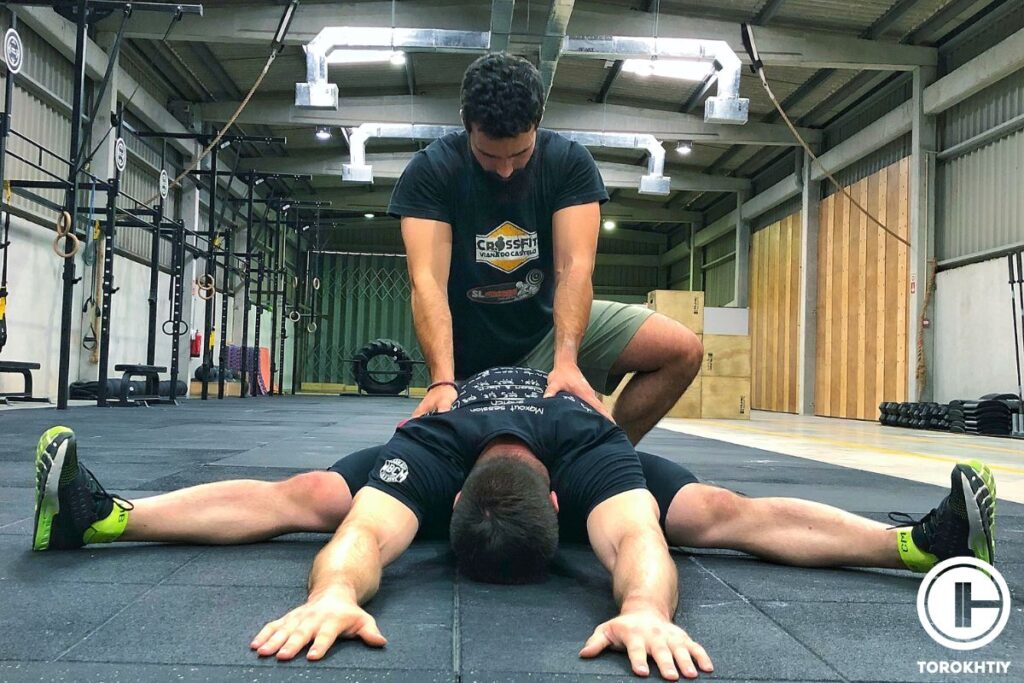
Enhance Athletic Performance
Your trapezius muscles might become overused and stiff as a result of poor posture. Stretching as part of your routine can assist improve your posture and lower your risk of pain and discomfort.
Stretching can aid in the release of tense muscles that may be leading to bad posture. Stretching can also assist to strengthen the muscles that support excellent posture, allowing you to retain normal alignment and lower your risk of pain.
In addition to these, here are a few more reasons to make stretches a part of your routine:
Reduce Headaches
Tension headaches can be exacerbated by tight trapezius muscles. You can assist relieve muscle tension and lower your risk of headaches by stretching your trapezius muscles on a regular basis.
Improve Breathing
Tight trapezius muscles can impede your breathing, making deep breathing difficult. You can help enhance your breathing and lung capacity by stretching these muscles.
Improve Circulation
Trapezius stretching can help enhance blood flow and circulation to the upper body, which can boost nutrition and oxygen delivery to your muscles and organs. This can result in better overall health and fitness.
Reduce Stress And Anxiety
Stretching in general can have a calming effect on the body, and trapezius stretching is no exception. By performing these stretches regularly, you can help reduce stress and anxiety and promote a sense of relaxation and well-being.
Improve Sleep
Tight muscles can make it difficult to get comfortable at night and can contribute to sleep disruptions. By stretching your trapezius muscles before bed, you can help promote relaxation and improve your chances of getting a good night’s sleep.
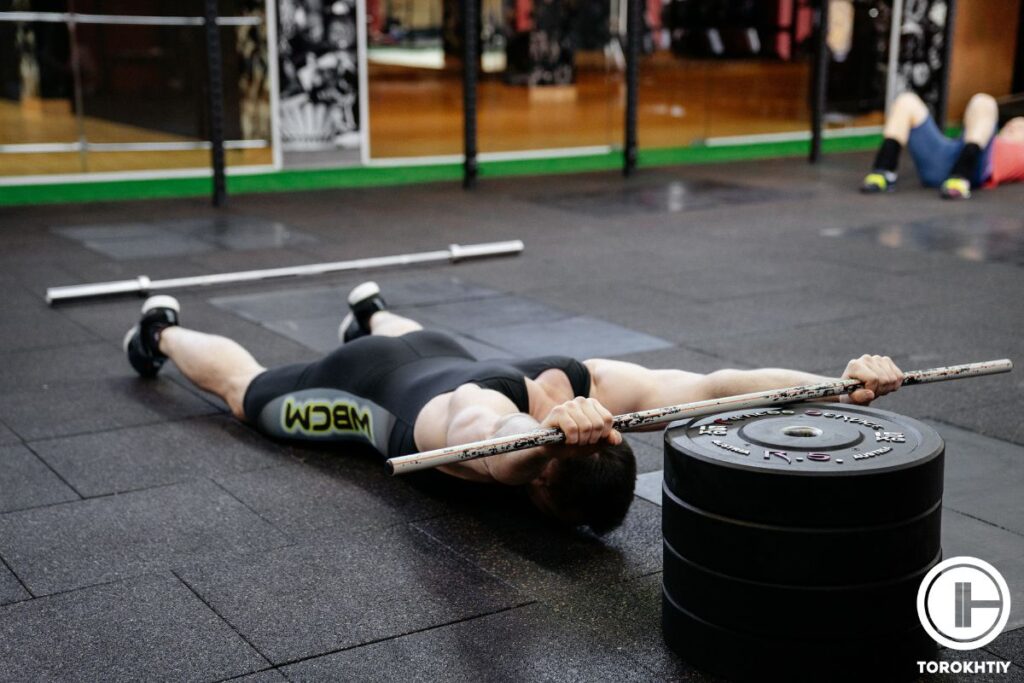
Trap Stretches: Mistakes To Avoid
Here are some common mistakes to avoid when performing trapezius stretches:
Overstretching
It’s essential to take it slow and not push yourself too hard when stretching. Overstretching can lead to injury or strain on the muscles.
Holding Your Breath
Many people tend to hold their breath when stretching, which can cause tension and limit the effectiveness of the stretch. Remember to breathe deeply and slowly throughout each stretch.
Follow us!

Free!
Get a 2-week Weightlifting Program as a bonus for the subscription to kickstart your training plan!

Free!
Not Targeting The Right Muscles
Make sure you are targeting the trapezius muscles specifically, rather than relying on general stretching that may not be effective for this area.
Poor Posture
Poor posture can contribute to tight trapezius muscles, so be mindful of your posture throughout the day and avoid slouching.
Skipping Warm-Up
It’s essential to warm up your muscles before stretching, as cold muscles are more prone to injury. Take a few minutes to do some light exercise or movement before starting your stretches.
Trapezius stretches do not require any special clothes, although it is recommended that you wear comfortable, loose-fitting clothing that allows for a full range of motion. Avoid wearing clothes that are too tight that they restrict your movement.
If you’re practicing standing stretches or incorporating other workouts into your regimen, you might want to consider wearing supportive athletic shoes.
By avoiding these common mistakes, you can ensure that your stretches are effective and safe.
Who Shouldn’t Perform Trapezius Stretches?
While trapezius stretches are generally safe and beneficial for most people, there are some situations where it may not be appropriate or advisable to perform them. Here are some groups of people who should exercise caution or avoid stretches altogether:
Individuals With Injuries
If you have a neck or shoulder injury, it’s essential to consult with a healthcare professional before attempting any trapezius stretches, as they may aggravate your condition.
Individuals With Certain Medical Conditions
If you have any medical conditions that affect your neck or shoulders, such as arthritis, fibromyalgia, or spinal stenosis, you should consult with your doctor before attempting trapezius stretches.
Pregnant Women
Pregnant women should exercise caution when stretching, as their bodies are undergoing significant changes and the risk of injury is higher. It’s essential to consult with a healthcare professional before attempting any stretches during pregnancy.
Beginners
If you’re new to stretching or exercise in general, it’s essential to start slowly and gradually build up your flexibility and strength. Rushing into advanced stretches can lead to injury or strain.
If you fall into any of these categories, it’s essential to consult with a healthcare professional before attempting stretches to ensure that they are safe and appropriate for you.
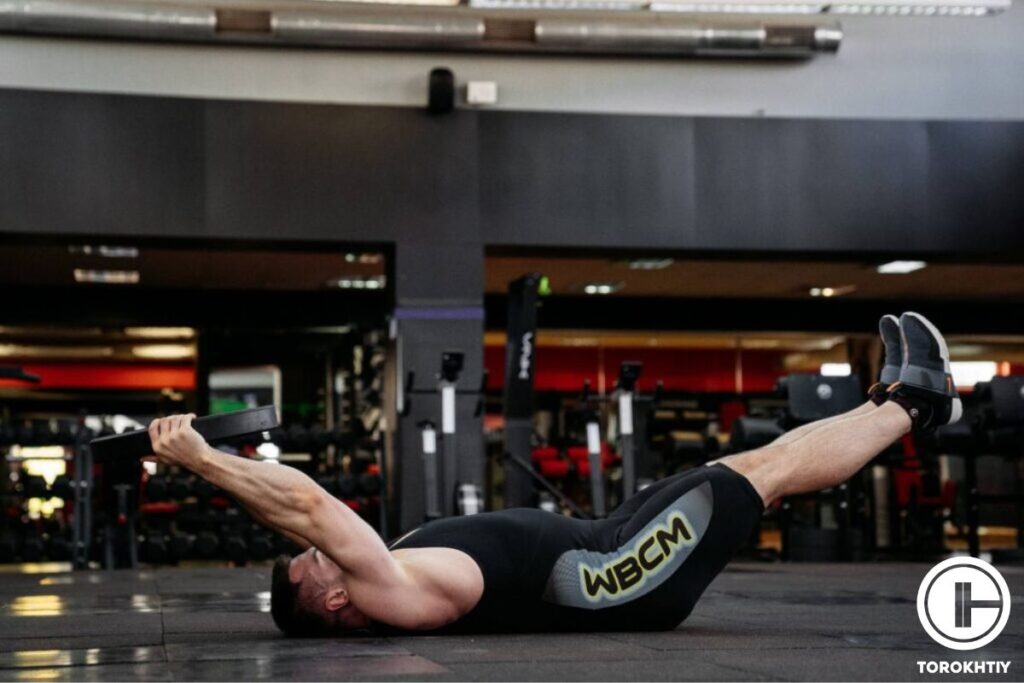
Stretches or Massage?
Stretching and massage are both helpful methods for relieving stress and pain in the trapezius muscle, but their effects differ.
Stretching the trapezius muscle improves its flexibility and range of motion, which can aid in injury prevention and overall mobility. Stretching can also assist to release muscle tension and tightness, which can lead to less pain and discomfort.
Massage, on the other hand, can help to relieve pain and stiffness by releasing tension and knots in the muscle tissue. Massage can also improve healing and reduce inflammation by increasing blood flow to the muscle.
Stretching and massage can both benefit the trapezius muscle, and which one to use depends on personal preference, the intensity of the muscle tension, and other personal circumstances. Many of the people listed above who should avoid trapezius stretches can benefit from a massage (but only with their doctor’s approval).
Dynamic vs Static Trapezius Stretches
Dynamic and static stretches are two common types of trapezius stretches, and both have their benefits.
Dynamic Stretches
Dynamic stretches involve moving your muscles through a range of motion, while static stretches involve holding a stretch in one position for an extended period.
Dynamic stretches for the trapezius muscles may include shoulder shrugs, shoulder rolls, or arm circles. These types of stretches help to warm up the muscles and prepare them for activity. They can also help improve mobility and flexibility in the upper body.
Static Stretches
Static stretches for the trapezius muscles may include the classic trapezius stretch where you gently pull your head to one side to stretch the muscle on the opposite side of your neck or the downward dog pose in yoga. These stretches can help to increase flexibility, improve posture, and relieve tension in the upper back and neck.
When deciding which type of trapezius stretch to use, it’s essential to consider your goals and what you want to achieve. Dynamic stretches are great for warming up before physical activity, while static stretches are better suited for cooling down and promoting relaxation.
It’s also worth noting that there is some controversy around the use of static stretches before exercise, as some studies suggest that they can decrease muscle power and performance. However, static stretching can still be beneficial when done at the right time and in the right way.
Ultimately, the best approach is to incorporate both dynamic and static stretches into your routine, depending on your needs and goals. It’s essential to listen to your body and make adjustments as needed to ensure that you’re getting the most out of your stretches while avoiding injury.
Trapezius Stretches Exercises For Peak Performance
With some background info covered, here’s to how to stretch your traps!
Seated Neck Release
- Sit on a chair with your back straight and your feet flat on the ground.
- Place your left hand on your right temple and gently tilt your head to the left, bringing your left ear towards your left shoulder.
- Hold for 10-15 seconds, then repeat on the right side.
- You should feel a stretch along the side of your neck and upper shoulder.
Shoulder Rolls
- Stand with your feet shoulder-width apart and your arms at your sides.
- Roll your shoulders forward in a circular motion, making large circles with your arms.
- After 10-15 seconds, reverse the direction and roll them backward.
- You should feel a gentle stretch in your upper back and shoulders.
Cat-Cow Stretch
- Start on your hands and knees, with your wrists directly under your shoulders and your knees under your hips.
- Inhale and arch your back, lifting your head and tailbone towards the ceiling.
- Exhale and round your spine, bringing your chin towards your chest and tucking your tailbone under.
- Repeat for 10-15 reps.
- You should feel a stretch along your spine and in your upper back.
Thread The Needle
- Start on your hands and knees, with your wrists directly under your shoulders and your knees under your hips.
- Reach your right arm up towards the ceiling, then thread it under your left arm, bringing your right shoulder and ear to the ground.
- Hold for 10-15 seconds, then repeat on the other side.
- You should feel a stretch in your upper back and shoulders.
Standing Chest Stretch
- Stand with your feet hip-width apart and your arms at your sides.
- Bring your hands behind your back and clasp them together.
- Gently lift your arms away from your back and hold for 10-15 seconds.
- You should feel a stretch in your chest and shoulders.
Yes, there are many other trapezius stretches that you can try. Some additional examples include:
Cow Face Arms
Sit cross-legged with your left arm extended overhead. Bend your left elbow, bringing your hand to the middle of your back. Reach your right hand behind your back and up towards your left hand, clasping them together if possible. Hold for 30 seconds, then switch sides.
Doorway Chest Stretch
Stand facing a doorway with your arms extended out to the sides at shoulder height. Place your hands on the door frame and lean forward, feeling the stretch in your chest and shoulders. Hold for 30 seconds, then relax.
When performing these stretches, it’s essential to listen to your body and avoid any movements that cause pain or discomfort. Start with a gentle stretch and gradually increase the intensity as you become more comfortable. Incorporating these trapezius stretches into your routine can help improve mobility, reduce tension, and promote peak performance.
FAQ
What Causes A Lack Of Trapezius Mobility?
Poor posture, repetitive strain, or injury can all contribute to a lack of trapezius mobility. Lifestyle factors can also contribute to this condition.
Why Do I Have A Limited Range Of Motion In My Trapezius?
A restricted range of motion in your trapezius could be caused by muscular tightness, joint stiffness, or a lack of flexibility in the surrounding muscles and tissues.
How Long Does It Take To Get A Flexible Trapezius?
The time it takes to enhance trapezius flexibility depends on factors such as age, present level of flexibility, and stretching frequency. Consistent stretching over weeks or months can create observable results.
Conclusion
Now you know the importance of trapezius stretches for relieving pain and improving overall posture and flexibility. We also explored the various stretches for the upper, middle, and lower trap muscles with detailed instructions so you can perform them correctly.
Additionally, now you also know the common stretches to avoid and who should avoid them in particular. We hope you found this article helpful and you can explore other numerous health and fitness related articles as well.
If you have any questions, please do not hesitate to send us your query, in fact, we’d love to hear your thoughts so let us know in the comments section!
Continue to stretch and be flexible! Good luck!
Also read:
- Elbow Mobility Exercises
- Upper Body Stretch
- Overhead Squat
- Shoulder Mobility Exercises
- Tricep Stretches
References:
- Trapezius Muscle // Clevelandclinic: https://my.clevelandclinic.org/health /body/21563-trapezius-muscle
- Upper Body Stretches // CardioKinetics: https://www.dtcc.edu/sites/default /files/upper_body_stretches.pdf
- Anatomy, Back, Rhomboid Muscles // NIH: https://floridapoly.edu/wp-content/uploads/ ERGORISK_Microbreak_ Posters_Neck_Upper_ Back_Stretches.pdf
- Neck and Upper Back Stretches // Floridapoly: https://floridapoly.edu/wp-content /uploads/ERGORISK_ Microbreak_Posters_Neck_ Upper_Back_ Stretches.pdf
Why Trust Us?
With over 20 years in Olympic weightlifting, strength training, nutrition coaching, and general fitness our team does its best to provide the audience with ultimate support and meet the needs and requirements of advanced athletes and professional lifters, as well as people who strive to open new opportunities and develop their physical capabilities with us.
By trusting the recommendations of our certified experts in coaching, nutrition, and sports training programming, as well as scientific consultants, and physiotherapists, we provide you with thorough, well-considered, and scientifically proven content. All the information given in the articles concerning workout programming, separate exercises, and athletic performance, in general, is based on verified data.
The product testing process is described in more detail here.
Author: Zinaida Bondarenko
Coach, Physiotherapist
Physical rehabilitation experience: 10 years
Zinaida was a member of the national team of Ukraine in rhythmic gymnastics, accumulating 15 years of professional sports experience. She holds certifications in functional training, rehabilitation, kinesiotherapy, specializing in working with athletes across various domains: recovery, rehabilitation, functional and mobility training, General Physical Preparedness (GPP), as well as injury prevention through specific program design. Moreover, she focuses on athlete and coach education to enhance performance and prevent injuries.
Reviewed by: Oleksiy Torokhtiy
Olympic Weightlifting Champion, PhD in Sport Science
Best Results: Snatch – 200 kg,
C&J – 240 kg
Oleksiy Torokhtiy is a professional athlete boasting 20 years of experience in Olympic weightlifting. With multiple European and World titles under his belt, he has showcased his prowess in two Olympic Games (Beijing 2008 and London 2012). Upon concluding his illustrious career, Oleksiy dedicated himself to coaching. By 2022, he had conducted over 200 weightlifting seminars worldwide. He is the visionary behind an international sportswear and accessories brand known for its motto, “Warm Body Cold Mind.” Additionally, he is an esteemed author and the creator of a series of training programs and eBooks.




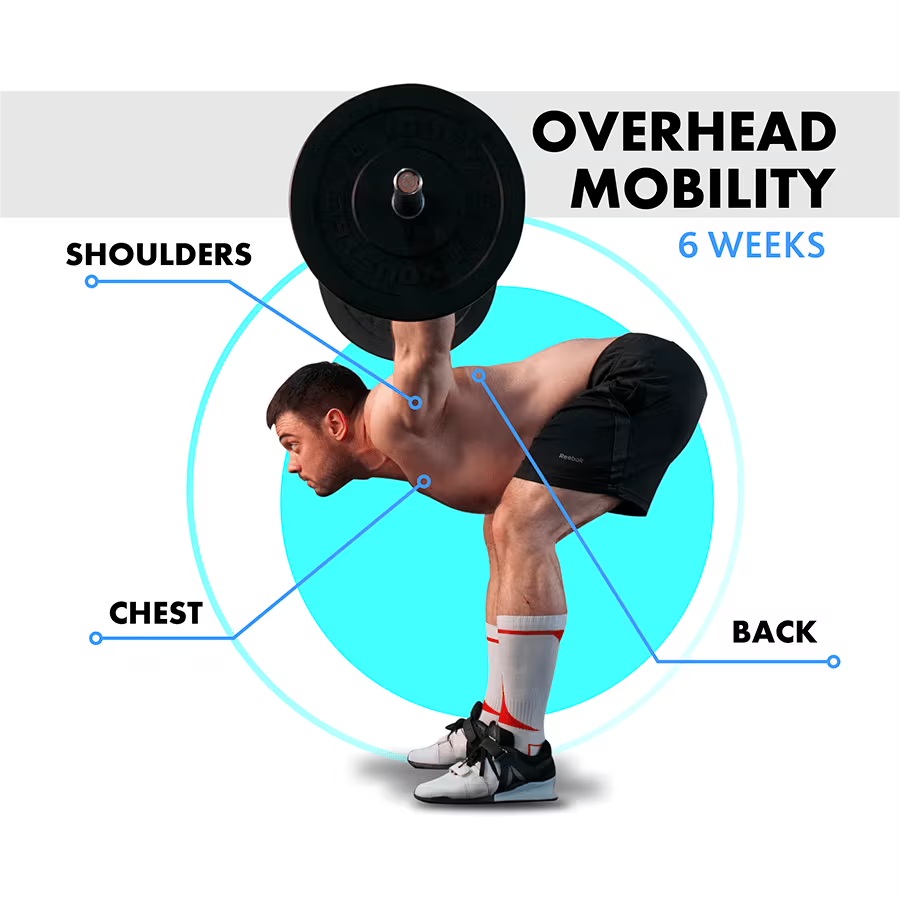
Still have questions after reading our article? Unlock your full potential by engaging with our experts and community! Don’t hesitate — leave a comment below and Zinaida Bondarenko will provide a personalized answer and insights to help you reach your goals.